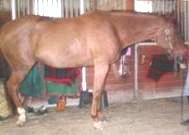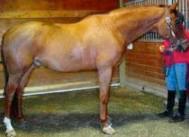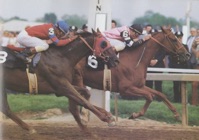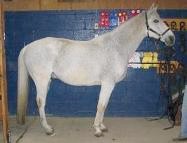Postural Rehabilitation


Postural Rehabilitation


Signs of Abnormal Posture
•Limbs consistently deviating from their normal (perpendicular) orientation with respect to the ground.
•Unwillingness to stand and bear weight on all four limbs simultaneously.
•Unwillingness to stand or sit symmetrically
•Chronic asymmetrical weight bearing, as evidenced by disparate hoof size or toe-nail wear.
•Aberrant or asymmetrical neck and head position, including eyes not held level.
•Distorted or asymmetrical spinal contour.
•Performance problems.
•Chronic or recurrent lameness, with no known structural injury.
•Chronic degenerative joint disease.

Primary control of standing posture
Vestibular apparatus
Vestibulo-ocular reflexes
Upper cervical musculature
Distal limb proprioceptors
TMJ and dento-aveolar joints
Cervical facet mechanoreceptors
All are commonly subject to damage or distortion in domestic animals.

Topics in Postural Rehabilitation Training
Introduction to Postural Rehabilitation
Living with Gravity
Normal and Abnormal Posture
Spinal Biomechanics
Neurophysiology of Postural Reflexes
Postural Contributions of the Upper Cervical Musculature
Neutral Posture in Manipulative Therapy
Locomotion Biomechanics
Gait Analysis
Canine Postural Rehabilitation and Techniques
Postural Contributions of the Stomatognathic System
Normal and Abnormal Canine Dentition
Evaluating the Canine Bite
Postural Contributions of the Distal Extremities
Muscle and Tendon Function
Gait Analysis
Current Research in Manipulative Therapies
Injury Forensics
Individual Tutorials in Postural Rehabilitation
Equine Postural Rehabilitation
Postural Contributions of the Stomatognathic System
Normal and Abnormal Equine Dentition
Dentition and manipulative therapies
Evaluating Equine Occlusion
Postural Contributions of the Distal Extremities
Evaluating and Modifying the Equine Hoof
Gait Analysis
Muscle and Tendon Function
Dissection of Equine Distal Limb
Equine Postural Rehabilitation Techniques
Current Research in Manipulative Therapies
Gait Analysis
Injury Forensics
Individual Tutorials in Postural Rehabilitation
Why is posture important to athletic performance?
Standing posture is a window into the overall integration of the complex neuro-musculoskeletal system. Most modern horses spend up to 20 hours a day standing still. Their ability to maintain a neutral standing posture is critical to their health and soundness and determines their performance during their brief periods of exercise.


Even superb athletes can be injured by "taking a bad step." Sometimes a bad step is caused by irregular footing at high speeds. Much more commonly, however, bad steps are the result of temporary joint instability in a limb during foot placement. Lack of joint stabilization during locomotion is connected to lack of joint stabilization during stance and inappropriate neuromuscular control. More importantly, most common athletic injuries are caused by long term postural compensations that overload the body’s musculoskeletal structures, predisposing them to damage from normal activities.


Most successful forms of manual therapy result in correcting and restoring the patient's critical postural mechanisms. Correct posture stabilizes the musculoskeletal support system, mitigates joint pain syndromes and reduces further injury. Correct standing posture also informs the cortical locomotory control centers for stabilized dynamic function, which improves overall motor coordination, athletic performance and body confidence.


Chronic pain syndromes and performance problems in domestic species are frequently related to postural dysfunction. In Postural Rehabilitation, you will learn the neurophysiology of postural reflexes, the structure and function of the head, neck and spine, the critical afferent signals that control posture and locomotion, and the ways in which human management may compromise their function in animals.
Postural Rehabilitation is a synthesis of techniques that restore normal, neutral posture, allowing the animal’s central nervous system to maintain a congruent relationship with gravity, the primary integrating force on earth.
PR Home About PR Seminars 2013 Schedule Views of PR Testimonials Faculty and Staff Find a Practitioner
Copyright 2007 Karen Gellman DVM, PhD and Judith M. Shoemaker DVM. No materials from this website maybe used for any purpose without permission.







